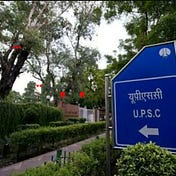India’s ‘No First Use’ doctrine (NFU) on the use of nuclear weapons is open for change in the future, defence minister Rajnath Singh has indicated, reflecting thinking within the establishment that no policy is writ in stone and could be modified to deal with current realities.
What is No First Use doctrine, and how did it come into being?
A commitment to not be the first to use a nuclear weapon in a conflict has long been India’s stated policy.
Pakistan, by contrast, has openly threatened India with the use of nuclear weapons on multiple occasions beginning from the time the two nations were not even acknowledged nuclear powers.
After the 1998 nuclear test when India declared itself a nuclear weapon state, it also enunciated a doctrine of ‘no first use’ of nuclear weapons.
Put simply, Indian decision-makers categorically rejected the idea of initiating the use of nuclear weapons in any conflict scenario. India’s nuclear doctrine was purely retaliatory in nature.
On January 4, 2003, the Cabinet Committee on Security (CCS) met to review the progress in operationalizing the country’s nuclear doctrine.
An official release issued that day summarized the decisions that were being put in the public domain.
Among the major points in the doctrine was “a posture of No First Use”, which was described as follows: “Nuclear weapons will only be used in retaliation against a nuclear attack on Indian territory or on Indian forces anywhere”.
However, the doctrine made it clear that India’s “nuclear retaliation to a nuclear attack strike will be massive and designed to inflict unacceptable damage”.
Power of Deterrence should not be misplaced:
The major thrust of any Indian nuclear strategic communications plan should be aimed at downplaying the nuclear factor in the political and strategic equation with China and Pakistan.
China too has an NFU policy and the Sino-Indian nuclear dynamic is not yet a cause for concern.
On the contrary, in Pakistan’s case there is a continuous attempt to increase the salience of nuclear threats so as to contain India’s reaction to terrorism and concurrently invite international attention.
The statement seems to be specifically aimed at Pakistan and is problematic at several levels.
A first-use approach against Pakistan or even China lacks credibility, as it would involve nuclear weapon application for substantial destruction of the adversary’s nuclear and economic capabilities.
Even if we succeed, the long term after effects of the nuclear fallout and climate change could pose existential threats not only to India and its neighbours, but depending on the magnitude of nuclear explosions, it could result in an existential threat to humanity itself. Scientific studies indicate this possibility.
It could be argued that an Indian second strike on which NFU is anchored could also bring about a similar existential consequence. True, except that second strike and NFU have relatively greater credibility, because they are premised on retaliation.
The notion that first use strengthens the power of deterrence is misplaced; it amounts to suicide for the fear of death.
Risks for India in Initial usage of Nuclear Weapons :
First use of nuclear weapons would require a massive increase in India’s nuclear delivery capabilities.
There is yet no evidence suggesting that India’s missile production has increased dramatically in recent times.
Moreover, India is yet to induct the Multiple Re-entry Vehicle (MRV) technology in its missiles, which is fundamental to eliminating hardened nuclear targets.
Finally, India’s intelligence, surveillance and reconnaissance (ISR) infrastructure capabilities would have to be augmented to such a level where India is confident of taking out most of its adversary’s arsenal.
India would have to alter significantly its nuclear alerting routine. India’s operational plans for its nuclear forces involve a four-stage process.
Nuclear alerting would start at the first hints of a crisis where decision-makers foresee possible military escalation. This would entail assembly of nuclear warheads and trigger mechanisms into nuclear weapons.
The second stage involves dispersal of weapons and delivery systems to pre-determined launch positions. The third stage would involve mating of weapons with delivery platforms.
The last and final stage devolves the control of nuclear weapons from the scientific enclave to the military for their eventual use.
Canisterization of missiles has combined the dispersal and mating of weapons into a single step, cutting down the effort required for achieving operational readiness.
Even then, this model does not support first use of nuclear weapons as it gives ample warning to the adversary of India’s intentions. There is certainly a need for a reappraisal of India’s nuclear doctrine.
Favouring of the ‘No First Use’ doctrine:
The main advantage of NFU is that it minimises the probability of nuclear use. This is so because it enhances the possibility of containing the crisis before the point of no return when miscommunications, misjudgement, misperception or the fog of war may force either power to go first.
Instead, if both are NFU powers, there is greater probability of political leaders stepping back from the brink for they know that a nuclear war cannot be won.
NFU for India also presents an opportunity for cooperation with China to work jointly towards a Global No First Use (GNFU) order.
Notably, there is considerable convergence regarding the belief of nuclear weapons being restricted to the political realm.
India, therefore, should take the lead on seeking a GNFU policy instead of creating doubts about its own adherence to it.
The defence minister’s statement does not provide any benefits for national security. Instead, it taints India’s image as a responsible nuclear power. An official clarification could recover lost ground.
Conclusion:
All doctrines need periodic reviews and India’s case is no exception.
Given how rapidly India’s strategic environment is evolving, it is imperative to think clearly about all matters strategic.
But if Indian policymakers do indeed feel the need to review the nation’s nuclear doctrine, they should be cognizant of the costs involved in so doing.
A sound policy debate can only ensue if the costs and benefits of a purported policy shift are discussed and debated widely.






